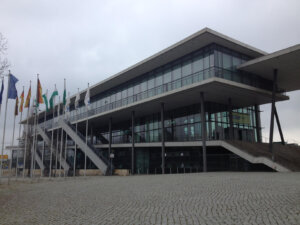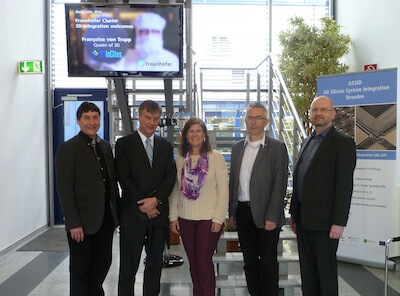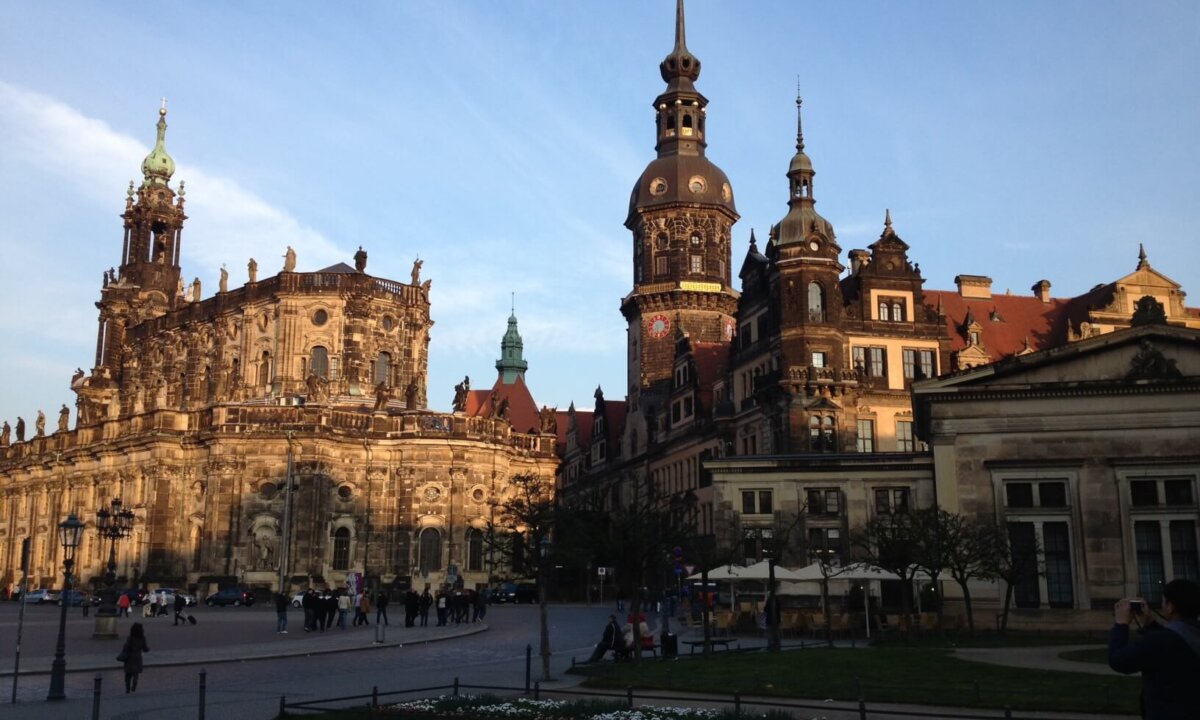Since the days even before the reunification of Germany; Saxony, and particularly Dresden, has been a vital center for microelectronics development in Europe. And since the reunification, Dresden has focused its investments on a single area: high technology and affiliated research. Both GLOBALFOUNDRIES and Infineon have a significant presence here, as well as many divisions of the Fraunhofer-Gesellschaft, the largest organization for applied research in Europe comprising 66 institutes and independent research units, and employing more than 22,000 people. Much of the focus is on semiconductors, and has earned the region the nickname “Silicon Saxony.”
The reason for my visit to Dresden this week was twofold. I was invited to attend the DATE 2014 Conference and moderate a panel discussion during its Friday 3D Workshop; and I was invited by Juergen Wolf, head of the 3D integration program at Fraunhofer IZM-ASSID, to visit and meet with members of other Fraunhofer institutes (ENAS, IIS-EAS, and IKTS) to learn about the Fraunhofer Cluster for 3D Integration.
While details of that visit will be forthcoming in another post, my visit to Fraunhofer and attendance at Date 2014 has inspired me to talk a bit about the European vision for its place in the semiconductor industry, and the parts Dresden and Fraunhofer Institutes play in that.
Once a hotbed of semiconductor manufacturing, Europe experienced a mass exodus of semiconductor device manufacturing to Asia in the early part of this century. In addition to device makers themselves, there was a loss of equipment, and materials suppliers, as well. As a result there is a major initiative, Horizon 20/20: which calls for bringing 20% of global semiconductor manufacturing back to Europe by 2020.

The success of this, according to many European semiconductor industry players, lies in what have been traditionally considered niche applications: automotive, medical devices, logistics and industrial electronics. In fact, Gerd Teepe, Director Design Enablement Dresden, GLOBALFOUNDRIES, noted in his DATE 2014 keynote, that microelectronics is at the center of the industrial revolution that’s going on today, and that as a result, the semiconductor industry is the dominant industry and affects all the others.
The return of semiconductor business to Europe is being enabled by what has been dubbed, “More than Moore” technologies. The Horizon 20/20 includes not just chip manufacturing, but package, assembly and test as well. “As packaging becomes more complex, there is the opportunity for European companies to work in this area again,” said Steffen Kröhnert, director of Technology at Nanium, in his presentation at DATE 2014. Nanium is Europe’s largest outsourced semiconductor assembly and test service provider (OSAT).
Juergen Wolf spoke of similar motivations during my visit to Fraunhofer IZM-ASSID earlier this week. In addition to talking about the purpose of the cluster, we talked quite a bit about Europe’s focus on 3D heterogeneous integration.

Specific to Germany, noted Wolf, there has been national funding to explore what added value Germany can contribute and what technologies would be best to exploit. Leveraging Fraunhofer Institutes’ strengths in developing heterogeneous integration technologies was the motivation behind establishing the Cluster for 3D integration. IZM-ASSID, ENAS, IIS-EAS, and IKTS have combined their collective competencies in technology, design, analytics, simulation and reliability for the purpose of creating a single access point for the industry in terms of projects and what Fraunhofer as a whole can do for a specific company. “The core is in Dresden because all the partners are here in Dresden, and it’s important for people to know each other,” said Wolf.
Silicon interposer technology has been a main focus of the work being done by Wolf’s team at IZM-ASSID. “The answer for added value is a formal interposer system because an integrated interposer offers more financial opportunities,” he said. “The goal is not to make it cheaper and cheaper. When you make TSVs you need advanced technologies and advanced technologies are not cheal.”
“In Dresden we have GLOBALFOUNDRIES manufacturing microprocessors in 28nm, we have Infineon and X-Fab, all looking at “More than Moore” technology, for heterogeneous integration” he said. “Europe doesn’t have capabilities better than 28nm. But we can integrate smaller nodes from other areas of the world.”
In Europe, they are not waiting for consumer electronics to drive the need. If interposer technologies and niche markets can help Europe achieve its 20/20 goal, its no wonder why there has been so much effort put into 2.5D and 3D integration. ~ F.v.T.



















